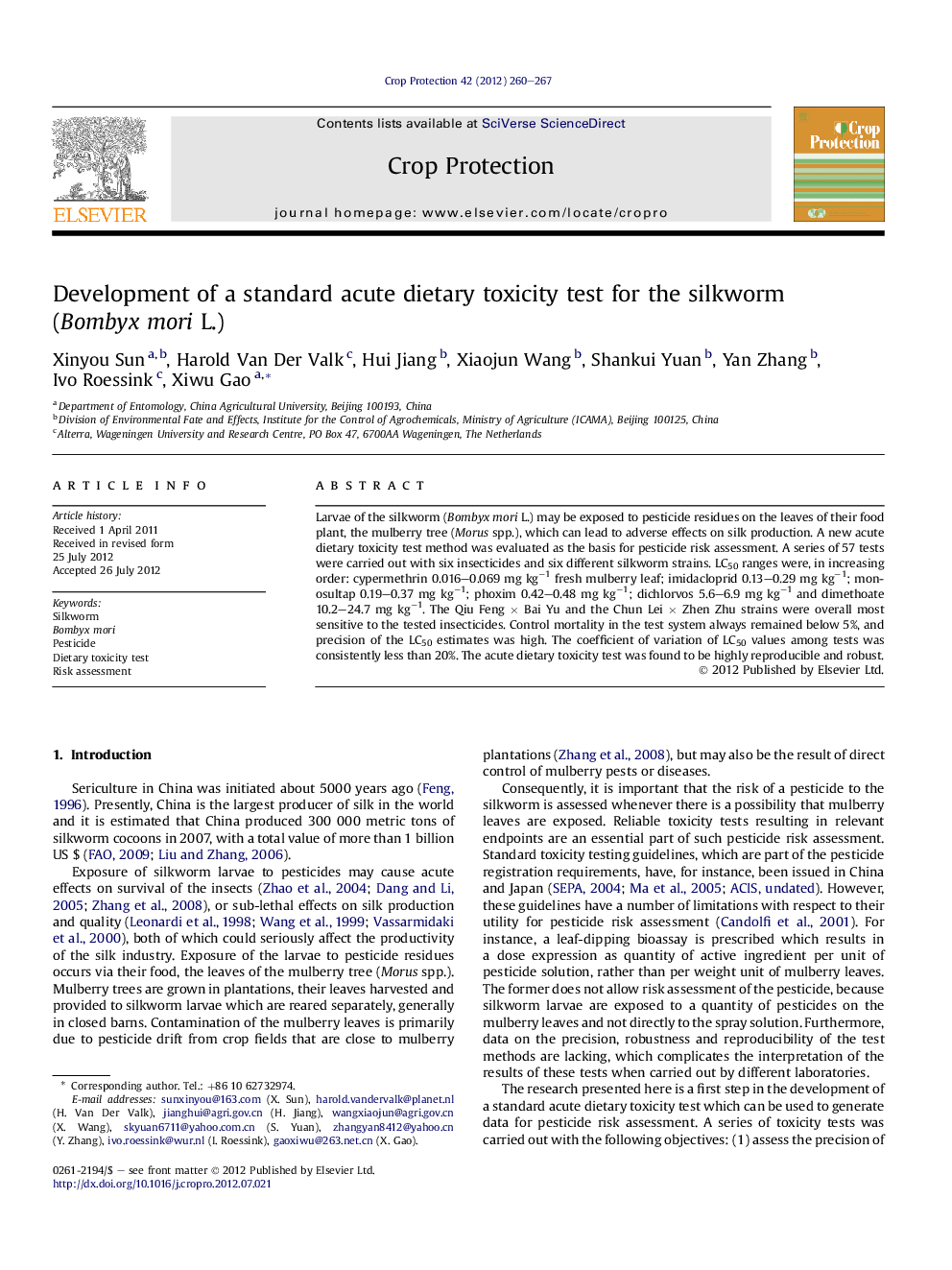| Article ID | Journal | Published Year | Pages | File Type |
|---|---|---|---|---|
| 4506173 | Crop Protection | 2012 | 8 Pages |
Larvae of the silkworm (Bombyx mori L.) may be exposed to pesticide residues on the leaves of their food plant, the mulberry tree (Morus spp.), which can lead to adverse effects on silk production. A new acute dietary toxicity test method was evaluated as the basis for pesticide risk assessment. A series of 57 tests were carried out with six insecticides and six different silkworm strains. LC50 ranges were, in increasing order: cypermethrin 0.016–0.069 mg kg−1 fresh mulberry leaf; imidacloprid 0.13–0.29 mg kg−1; monosultap 0.19–0.37 mg kg−1; phoxim 0.42–0.48 mg kg−1; dichlorvos 5.6–6.9 mg kg−1 and dimethoate 10.2–24.7 mg kg−1. The Qiu Feng × Bai Yu and the Chun Lei × Zhen Zhu strains were overall most sensitive to the tested insecticides. Control mortality in the test system always remained below 5%, and precision of the LC50 estimates was high. The coefficient of variation of LC50 values among tests was consistently less than 20%. The acute dietary toxicity test was found to be highly reproducible and robust.
► LC50 tests using six silkworm strains and six pesticides were performed. ► The Qiu Feng × Bai Yu and the Chun Lei Zhen × Zhu strains were overall most sensitive. ► Test method was standardized and proved stable and robust.
